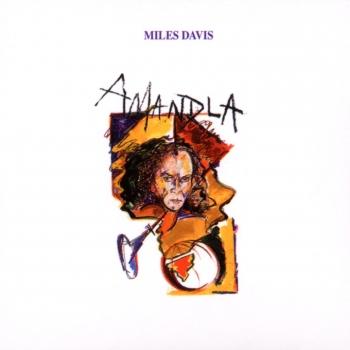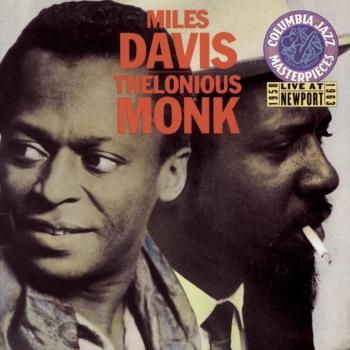
Birth Of The Cool Miles Davis
Album Info
Album Veröffentlichung:
1956
HRA-Veröffentlichung:
18.01.2014
Das Album enthält Albumcover
Entschuldigen Sie bitte!
Sehr geehrter HIGHRESAUDIO Besucher,
leider kann das Album zurzeit aufgrund von Länder- und Lizenzbeschränkungen nicht gekauft werden oder uns liegt der offizielle Veröffentlichungstermin für Ihr Land noch nicht vor. Wir aktualisieren unsere Veröffentlichungstermine ein- bis zweimal die Woche. Bitte schauen Sie ab und zu mal wieder rein.
Wir empfehlen Ihnen das Album auf Ihre Merkliste zu setzen.
Wir bedanken uns für Ihr Verständnis und Ihre Geduld.
Ihr, HIGHRESAUDIO
- 1 Move 02:34
- 2 Jeru 03:14
- 3 Moon Dreams 03:20
- 4 Venus De Milo 03:13
- 5 Budo 02:36
- 6 Deception 02:49
- 7 Godchild 03:10
- 8 Boplicity 03:02
- 9 Rocker 03:07
- 10 Israel 02:18
- 11 Rouge 03:16
Info zu Birth Of The Cool
Birth of the Cool is a compilation album by American jazz musician Miles Davis, released in 1957 on Capitol Records. It compiles eleven songs recorded by Davis's nonet for the label over the course of three sessions during 1949 and 1950. Featuring unusual instrumentation and several notable musicians, the music consisted of innovative arrangements strongly inspired by classical music, and marked a major development in post-bebop jazz. As the title implies, these recordings are considered seminal in the history of cool jazz. The majority of the recordings on the record are under three minutes. The album has since been reissued many times. Blue Note recently released a version using the original tapes from Rudy Van Gelder, who produced the album.
Gil Evans contributed some charts to the sessions, acting as an advisor to a group of musicians who had met in his small New York apartment above a Chinese laundry. Evans had gained a reputation in the jazz world for his orchestration of bebop tunes for the Claude Thornhill orchestra, including Davis's 'Donna Lee'. Davis was seeking an alternative to the small groups typical of contemporary jazz (he was a member of Charlie Parker's quintet at the time), and in 1947 started to organize the loose circle of musicians into a working group. Rehearsals and experiments took place over the next year.
The nonet performed live only briefly—initially for a two week engagement in late August and early September 1948 at the Royal Roost Club in New York. Billed as the 'Miles Davis Band', the group at this time consisted of Davis (trumpet), Mike Zwerin (trombone), Bill Barber (tuba), Junior Collins (French horn), Gerry Mulligan (baritone saxophone), Lee Konitz (alto saxophone), John Lewis (piano), Al McKibbon (bass), and Max Roach (drums). Former Dizzy Gillespie vocalist Kenny Hagood was featured on a few songs. Unusually, the arrangers (Mulligan, Evans and Lewis) were given credit. The group returned to the Royal Roost later in September, and recordings from 4 September and 18 September 1948 were included on the 1998 Complete Birth of the Cool CD, alongside the later studio sides. There was a further short residency the following year at the Clique Club, but the nonet was not a financial success, and disbanded. In 1949 Davis had a contract with Capitol to record twelve sides for 78 rpm singles. He thus reformed the nonet to record three sessions in January and April 1949 and March 1950. Davis, Konitz, Mulligan and Barber were the only musicians who played on all three sessions, though the instrumental lineup was constant (excepting the omission of piano on a few songs). Originally released as singles, eight of the tracks were compiled in 1953 on a 10' vinyl record in Capitol's 'Classics In Jazz' series (H-459), and Birth of the Cool was released in 1957 as a 12' LP that added the remaining three unreleased instrumental pieces ('Move', 'Budo' and 'Boplicity'). The final track, 'Darn That Dream' (the only song with vocals, by Hagood), was included with the other eleven on a 1971 LP. Subsequent releases have been based on this last arrangement.
Musically, the songs on Birth of the Cool stand as an important reaction to the prominent bebop form in contemporary jazz. Though the break can be exaggerated—Charlie Parker participated in the discussions Evans led, most of the musicians were drawn from the bebop scene, and many continued to play in that style for years afterward—it inspired a whole school of jazz musicians, particularly in California in what is usually referred to as 'West Coast jazz' or the 'cool school'.
Miles Davis, trumpet
Kai Winding, trombone
J.J. Johnson, trombone
Junior Collins, french horn
Sandy Siegelstein, french horn
John Barber, tuba
Lee Konitz, alto sax
Gerry Mulligan, baritone sax
Al Haig, piano
John Lewis, piano
Joe Shulman, bass
Nelson Boyd, bass
Al McKibbon, bass
Kenny Clarke, drums
Max Roach, drums
Kenny Hagood, vocals
Recorded in New York, New York on January 21 and April 22, 1949 and March 9, 1950.
Digitally remastered.
Kaum ein anderer Musiker vermochte die Geschichte des Jazz derart nachhaltig zu beeinflussen, wie der am 26.05.1926 in Alton, Illinois geborene und in St. Louis aufgewachsene Miles Davis. Ohne den 'Prince of Darkness' wären die meisten Schlüsselentwicklungen des Jazz ab 1950 undenkbar gewesen. Mit unnachahmlicher Intonation und sparsamer melodischer Gestaltungskraft hat sich der Trompeter den Status einer Pop-Ikone erspielt.
Seine ersten wichtigen Gehversuche machte Miles in New York, wo er mit seinem musikalischen Vorbild Charlie Parker zusammentraf, in dessen Band er umgehend spielte. 1948 leitete der Trompeter bereits seine eigene Band, die mit Arrangements von Gil Evans zu den 'Birth Of The Cool'-Sessions führte. Neben seinen freelance Arbeiten gründete Miles Davis 1955 sein erstes Quintett bestehend aus Red Garland, Paul Chambers, Philly Joe Jones und John Coltrane. In den Jahren 1963-68 formierte er das zweite große Quintet, in welchem der junge Wayne Shorter am Saxophon brillierte (mit Herbie Hancock, Ron Carter und Tony Williams).
Die späten 60-er Jahre brachten unter Miles' Impuls die Wende hin zum Jazz Rock. Alben wie 'Bitches Brew' und 'We Want Miles' stehen paradigmatisch für diese Zeit. In der ersten Hälfte der 70-er Jahre veränderte der Ausnahmetrompeter häufig die Besetzungen seiner Band. In großzügig angelegten Gruppenimprovisationen integrierte er die vormals 'jazzfremden' Tablas, Sitar und diverse Percussioninstrumente. Den Sound seiner Trompete veränderte er mit dem Einsatz eines WahWah-Pedals. Die psychedelisch anmutende Musik dieser Zeit polarisierte das Publikum, viele Fans des 'frühen Miles' wollten den neuen 'elektrischen' Weg nicht mitvollziehen, doch Davis zielte auf ein junges, experimentierfreudiges Publikum.
Nach längerer Zurückgezogenheit aufgrund von Drogenproblemen kehrte der 'Prince of Darkness' in den frühen 80-er Jahren mit jungen Musikern zurück, seine Band wurde zum Sprungbrett für die wichtigsten Karrieren des aktuellen Jazz. Unter seinen Schülern waren John Scofield, Kenny Garrett, Darryl Jones und Marcus Miller. Der Bassist, Multi-Instrumentalist und Produzent Miller schuf mit Miles Davis die deutlich von der aktuellen Popmusik beeinflußten Spätwerke 'Tutu' und 'Amandla'. Diese Alben zeigen in vollendeten Produktionen das Hit-Potential des Trompeters, der in zahllosen Konzerten dieses Material immer neu als elektrisierender Improvisator präsentierte. Am 28.09.1991 starb der wichtigste Musiker des Jazz wenige Wochen nach seinem letzten Konzert an einer Lungenentzündung. Das posthum veröffentlichte Album 'Doo-Bop' wurde 1992 mit dem Grammy in der Kategorie 'Best R&B Instrumental Performance' ausgezeichnet.
Dieses Album enthält kein Booklet






































